No headings found
Why Trust Gadgetbyte?
At Gadgetbyte, we invest substantial hours into rigorously testing each product or service we review, guaranteeing that you make informed purchases. Learn more about our testing process.
Review Overview
Design and Build
9.5/10
Display
9/10
Back Camera
8/10
Front Camera
7.5/10
Performance
7.5/10
Battery
7.5/10
Value For Money
7/10
Nothing Phone 2 continues the 'Glyph Supremacy' design from the Phone 1. The Nothing OS 2.0 feels great while the display is equally incredible. The dual camera steup is dependable in most cases but a slight optimization will be appreciable. Powered by a SD 8+ Gen 1 chip, the performance is good, except for the gaming, which will hopefully improvise with future updates. Overall, a well balanced phone but at a slightly higher price tag!
And it also takes Nothing’s entire… “anti-boring tech” mantra to the next step.But as expected, all these improvements come at a cost. Quite literally. While the Phone 1 started at INR 33,000 in India (or 34,000 after the price revision), the Phone 2 starts at 45,000 Indian rupees instead. Which begs the question if the Phone 2 does enough to justify this price jump in the first place! And after testing it out for about a week now, here's what I think about it.
Nothing Phone 2 Review: Specifications
- Body: 76.4 x 162.1 x 8.6mm, 201.2gm, Glass back, Aluminum frames, IP54 dust/splash resistant
- Display: 6.55-inches Flexible OLED LTPO panel, 120Hz refresh rate, 240Hz touch sampling rate, Gorilla Glass
- Other Properties: HDR10+, 1600 nits peak brightness, 10-bit color depth
- Resolution: FHD+ (2412 x 1080 pixels), 394 PPI
- Chipset: Qualcomm Snapdragon 8+ Gen 1 5G (4nm mobile platform)
- Memory: 8/12GB LPDDR5 RAM, 128/256GB UFS 3.1 storage (fixed)
- Software & UI: Android 13 with Nothing OS 2.0 on top
- Rear Camera: Dual (with LED flash); – 50MP, f/1.88 Sony IMX890 primary sensor, OIS + EIS – 50MP, f/2.2 Samsung JN1 ultrawide sensor, 114° FoV, 4cm macro
- Front Camera: 32MP, f/2.45 Sony IMX615 sensor (hole-punch cutout)
- Audio: Stereo speaker, 3 high definition mics, No headphone jack
- Security: In-display fingerprint sensor (Optical)
- Connectivity: Dual-SIM (Nano), WiFi 6 a/b/g/n/ac/ax (Dual-band), Bluetooth 5.3, GPS / AGPS / Galileo / Glonass / QZSS / BDS / NsvIC / SBAS, USB Type-C, NFC, 4G LTE (VoLTE), 5G
- Battery: 4700mAh with 45W PPS 3.3 charging, 15W Qi Wireless charging, 5W reverse charging
- Color Options: Black, White
Nothing Phone 2 Review:
Design
So right off the bat, the Phone 2 doesn’t look all that different next to the phone (1). Which isn’t a bad thing. I know there are a lot of memes and comparisons floating around on the internet mocking this similarity but if you ask me, a young company like Nothing… giving up on its distinct visual identity so early in the game? Now that would be rather disappointing.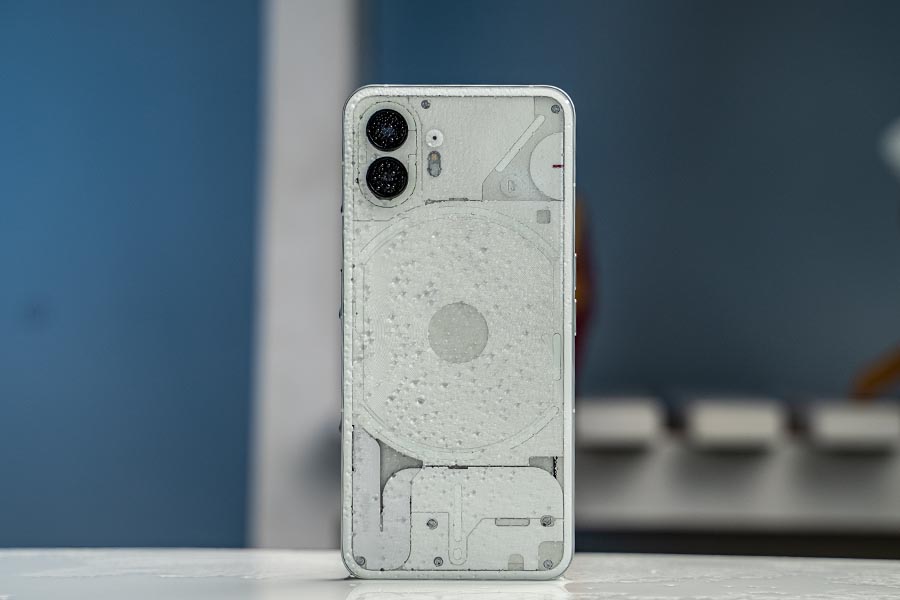
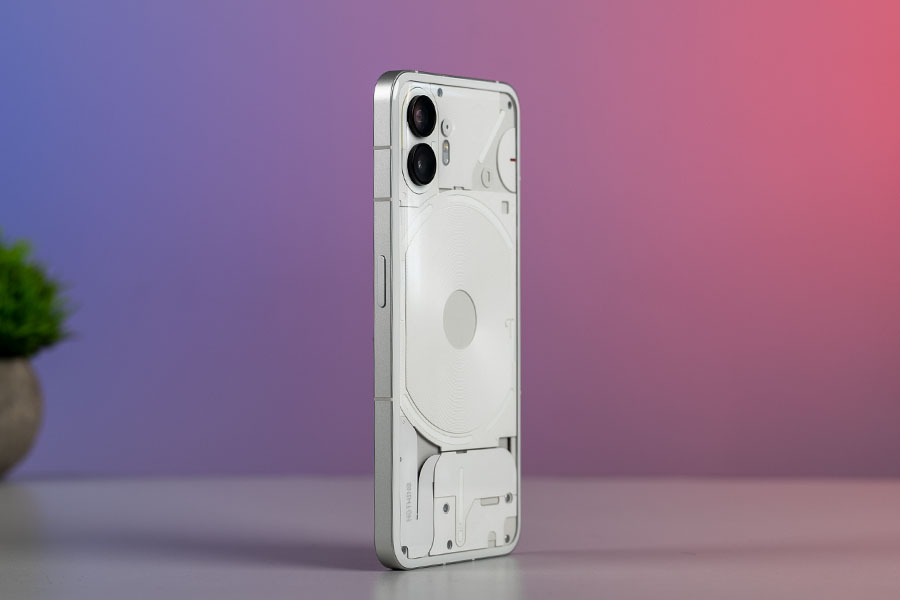
How's the Glyph Interface?
Other than that, the actual layout of the Glyph Interface is also somewhat different now. It’s still located at its usual place but as you can see, there’s a cutoff around the one on the camera module and the “C” shaped pattern surrounding the charging coil now. More importantly, Nothing says Phone 2 has 33 individually addressable LED lighting zones compared to just 12 on the phone (1), for even finer control and customization. And yeah, these updates do a good job of making the Glyph Interface more than just a gimmick. From visualizing timers to volume levels, the Phone 2’s Glyph Interface can even act as a progress bar for some third-party apps like Uber and Zomato. Kinda like “Live Activities” on iPhones, but it’s at the back of the phone, and there’s no graphical interface either. There’s also a new feature called “Essential Notifications” — which I was quite eager to check out — where the top-right LED strip lights up when you receive notifications from select apps, and it stays on until you read or dismiss them. At least that’s how it’s supposed to work. But for some reason, the notification light turns off as soon as I unlock the phone. Doesn’t matter if I read the notification or not. So I hope Nothing is working on a fix as we speak.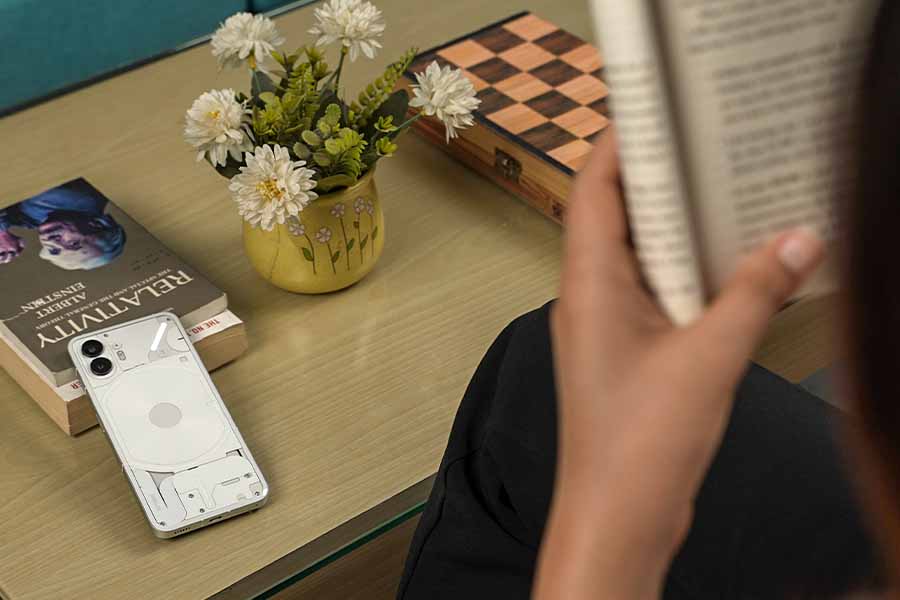
Display
Like the design, the Phone 2’s display also gets a bunch of useful upgrades. It’s a slightly larger 6.7” OLED panel now with marginally thinner bezels on all four sides, although the one upgrade I’m most thankful for is definitely its 1,000 nits of full-screen brightness. Or 1,600 nits when watching HDR videos. The phone (1) could technically hit 1,200 nits at best but Nothing capped it to just 700 nits because of concerns over excess heat and battery consumption.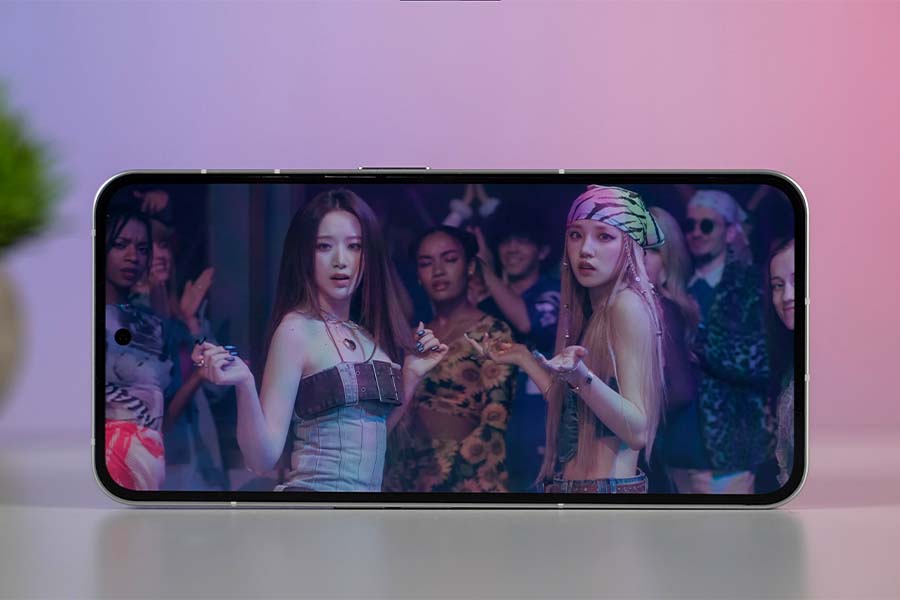
Stereo Speakers
But I’m having a major déjà vu listening to its stereo speakers because Nothing has still not figured out a way to ship a good audio setup on its smartphones. For a company that kicked things off in the audio industry, this is frankly a little disappointing. It doesn’t sound too bad when playing podcasts or acoustic music but as soon as there’s anything with a lot of instruments and dynamics, the Phone 2 breaks down, loses clarity, and sounds distorted. And since Nothing continues to place the fingerprint reader so down the screen, unlocking the phone remains a struggle to this day. At least its haptics are pretty great, and I found its vibration feedback to be a little more crisp and precise compared to the phone (1).
Performance
That brings me to performance. And this is where you’d find the biggest upgrade on the Phone 2. The Snapdragon 778G+ was and still is a decent processor for the phone (1) but I guess most of us were just… expecting a bit more from Nothing on the performance front. Thankfully, Phone 2’s Snapdragon 8+ Gen 1 chip finally enables a flagship-like smartphone experience. It is a slightly underclocked version of 8+ Gen 1 — like what we saw on the OnePlus 11R and POCO F5 Pro — but I found no major performance hiccup. That’s because this is one of Qualcomm’s best chipsets in recent years and Nothing has done a phenomenal job of optimizing its software to play nice.Nothing OS 2.0
I can’t believe I’m saying this but Nothing OS 2.0 on the Phone 2 is one of the most stable Android skins I’ve ever used! And with the promise of 3 major OS and 4 years of security updates, I’m eager to see how the company makes Nothing OS even better. Everything just… works effortlessly here. The system animations are fluid and logical, while apps load quickly and feel responsive as well. Nothing’s memory management continues to impress and I can rest assured that my apps won’t be needlessly killed in the background. As for customization, Nothing’s latest spin on stock Android is mostly geared towards letting users get to what they want quicker. Mostly with the help of widgets. Now, I’m not a big fan of widgets and prefer my home screen clean and tidy, but if you want, the Phone 2 lets you set up all sorts of widgets — including ones with swipeable information — even on the lock screen.Gaming
Okay, although Phone 2’s regular, everyday performance is solid, gaming is where Nothing still has a lot of work to do. A more energy-efficient chip, mixed with a larger chassis, means the Phone 2 doesn’t overheat as much as the phone (1), sure. But if gaming’s a priority, then this shouldn’t be at the top of your shopping list. When playing Genshin Impact at the highest settings, for example, I was getting around 55 fps on average for the first 5-6 minutes or so. But after a while, it dropped to just 45 fps and the phone got quite hot too.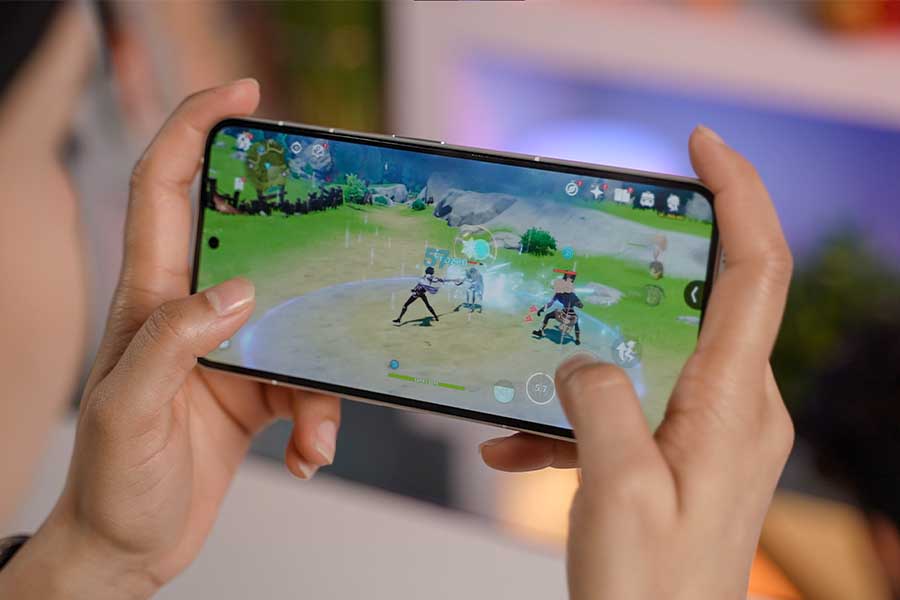
Camera
That brings me to the cameras. I was thoroughly impressed with the phone (1) in this department so naturally, my expectations from a more premium device were even higher. And it seems that Nothing has tried a different — almost mainstream — kind of image tuning this time. Like punchy colors that we usually associate with Samsung phones and the somewhat contrasty processing, you’d typically expect from an iPhone. Don’t worry, the new 50MP IMX890 sensor on the Phone 2 (yeah the same IMX890 that we’ve seen on a bunch of OnePlus and OPPO phones this year) takes great photos in ample lighting conditions. With good details and a nice dynamic range. I also briefly compared it with the Pixel 7a and found the Phone 2 to be competing pretty well. It doesn’t struggle to lock focus on close-up subjects like Pixel but in relatively challenging conditions, Google’s computational photography is simply far too ahead.Selfie
The selfie camera has also been upgraded to a 32MP sensor this time, and I love how its photos retain good sharpness and natural skin tone. Its HDR processing isn’t the best against a well-exposed background so that’s another thing Nothing can fix with software updates.Video
The Phone 2 comes with improved video capabilities too. You can now shoot at up to 4K 60 fps from both wide and ultrawide camera and the footages are — a bit contrasty like the photos — but are steady enough. Choosing to take it down to 4K 30 fps even lets you switch between the two cameras as you’re recording. And if you want the most stable footage, there’s the new “Action Mode” which mixes both OIS and EIS. But it’s only available for the primary camera, and at up to 1080p 60 fps only. Selfie videos also max out at 1080p 60 fps although the overall video quality is quite good.Battery
Moving on. The Nothing Phone 2 now has a marginally larger 4700 milli-amp battery as well. But the actual screen time I'm getting here isn't all that different from the phone (1) at around 6 to 6.5 hours only. What’s worse is that it has quite a severe overnight battery drain issue. And one night it drained by as much as 9%! So I definitely think optimizing the battery side of things should be one of Nothing’s top priorities. As for the charging speed, it’s been upgraded from 33 to 45W. But like last time, you’re not getting a compatible power brick inside the box itself.Nothing Phone 2 Review: Conclusion
So that was all for my full review of the Nothing Phone 2. And looking beyond all the hype, I still think Nothing has managed to deliver a pretty impressive semi-flagship phone that checks most boxes. Including a solid build quality, a nice display, excellent performance, and decent cameras. Its cameras certainly have a lot of room for improvement, but ultimately, I can’t help but think if this is how the Phone 2 should’ve shaped up to be.
Nothing Phone 2 Review: Pros and Cons
Pros
- Unique Design with Glyph Interface
- Decent Display
- Incredible software experience with Nothing OS 2.0
- Dependable Cameras
Cons
- Pricing could have been better
- Mediocre speakers
- Cameras can be more optimized
Article Last updated: July 17, 2023





